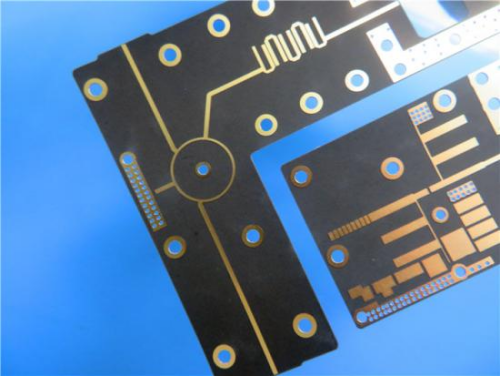| |
 |
| |
|
|
|
|
|
| |
|
What is Surface Resistivity in High Frequency PCB? |
|
|
|
| |
|
1. Introduction of DK Surface Resistivity |
|
|
|
| |
|
In high-frequency PCB design, surface resistivity is an absolutely critical factor that has a profound impact on the performance and reliability of electronic circuits. Surface resistivity refers to the electrical resistance offered by the material's surface, which affects the PCB's ability to resist the flow of electrical charge along its surface. |
|
|
| |
|
|
|
|
| |
|
2. How Surface Resistivity Impacts Signal Integrity |
|
|
| |
|
Surface resistivity directly impacts the performance of high-frequency circuits. Materials with low surface resistivity enhance the conduction of electrical signals, ensuring clarity and integrity. Conversely, higher surface resistivity increases resistance to surface currents, which can help reduce electromagnetic interference (EMI) and maintain signal integrity. However, excessively high surface resistivity may result in increased signal loss and noise, negatively impacting PCB functionality. Therefore, a thorough understanding of surface resistivity is essential for effective PCB design. |
|
|
| |
|
|
|
|
| |
|
3.Choosing the Right Materials: A Guide to Surface Resistivity |
|
|
| |
|
Selecting the appropriate high-frequency PCBs is a complex task that requires meticulous consideration of surface resistivity. This is because surface resistivity has a significant impact on signal integrity, electromagnetic compatibility, and overall functionality. Bicheng Electronics Technology Co., Ltd. stands as a premier provider of high-quality PCB, offering an extensive material selection that includes renowned brands like Taconic, Rogers and Wangling. Additionally, it provides the widely used FR-4 material. Each of these materials offers unique properties and advantages that cater to the diverse requirements of applications in advanced telecommunications, aerospace, and medical devices. |
|
|
| |
|
|
|
|
| |
|
The table below summarizes the surface resistivity of various PCB materials: |
|
|
| |
|
Material |
Surface Resistivity (Ω) |
Key Characteristics |
Taconic |
1.0 × 10^9 |
Excellent electrical properties, low loss |
Rogers |
1.0 × 10^9
(IsoClad® 917) |
Excellent electrical properties, suitable for intelligent helmet |
Wangling |
1.0 × 10^7 |
Controllable characteristics, versatile usage |
FR-4 |
1.0 × 10^6 |
Cost-effective, good insulation properties |
|
|
|
| |
|
|
|
|
| |
|
When it comes to choosing materials for high-frequency PCBs among Taconic, Rogers, and Wangling, specific application requirements should be taken into account. Taconic material is favored for its outstanding electrical performance and low loss. Rogers material is perfect for precision and customizability. Wangling material presents a balance between performance and cost-effectiveness. Meanwhile, compared with these specialized high-frequency materials, FR-4 is generally more economical and has lower surface resistivity.
Among them, we are going to talk about the Rogers (IsoClad® 917) high-frequency PCB because It has a relatively low surface resistance and boasts excellent electrical properties and high quality.. |
|
|
| |
|
4. Introduction of Rogers IsoClad® 917 |
|
|
| |
|
|
|
|
| |
|
4.1 Substrate Features This IsoClad 917 High Frequency PCB is constructed on a 20 mil (0.508mm) IsoClad 917 substrate, with an initial copper cladding thickness of 0.5 oz which is then plated to a final thickness of 1 oz.
4.2 Dimensions and Application It has a length of 126 mm and a width of 95 mm, and it is designed for use in intelligent helmets.
4.3 Surface Treatment The surface finish on the pads and exposed traces is chemical gold, which enables excellent performance for surface-mount device (SMD) soldering. Besides, the entire board is covered by a green solder mask, providing protection and enhancing durability.
4.4 Quality Assurance Manufactured in accordance with IPC Class 2 standards, this PCB undergoes rigorous quality control and is 100% electrically tested to ensure its reliability and performance. |
|
|
| |
|
|
|
|
| |
|
4-1. IsoClad 917 High Frequency PCB |
|
|
| |
|
 |
|
|
| |
|
|
|
|
| |
|
5. Summary |
|
|
| |
|
All in all, understanding and optimizing surface resistivity remains crucial for achieving success in modern PCB designs. By giving priority to low surface resistivity in material selection and design, engineers can enhance the reliability and efficiency of their circuits. |
|
|
| |
|
|
|
|
| |
|
|
|
|
| |
|
|
|
|
| |
|
|
|
| |
|
|
|
| |
|
|
|
|
|